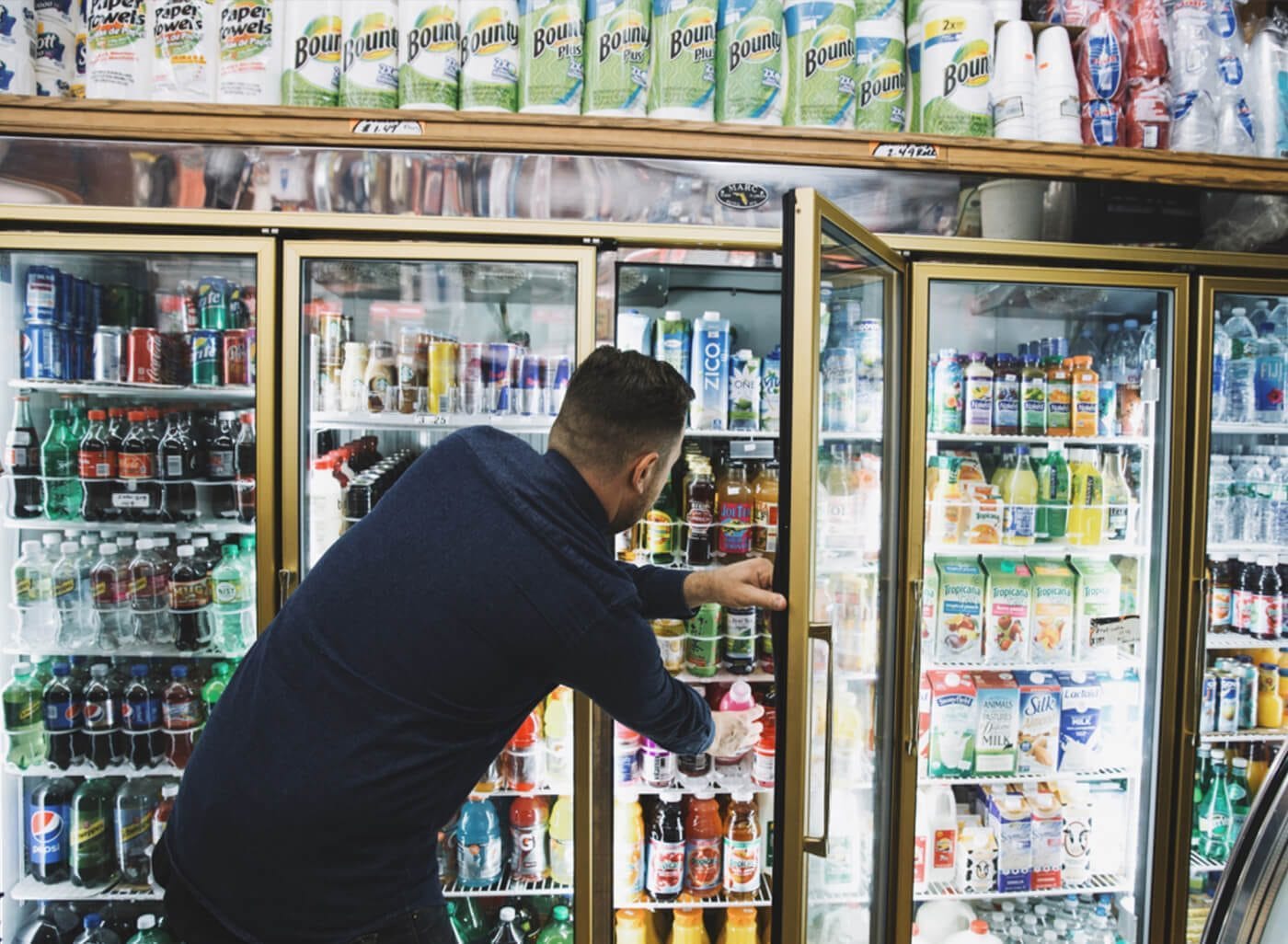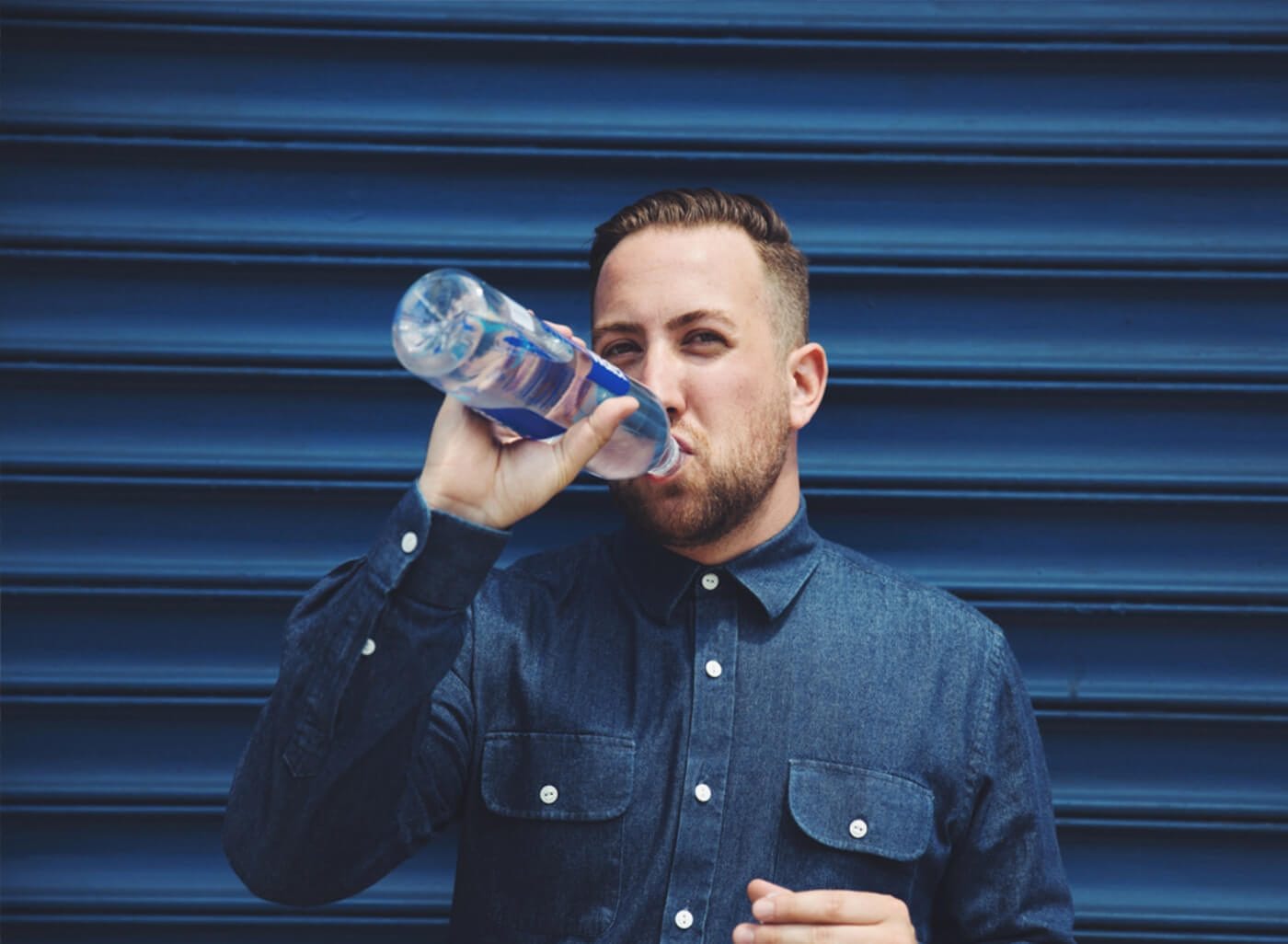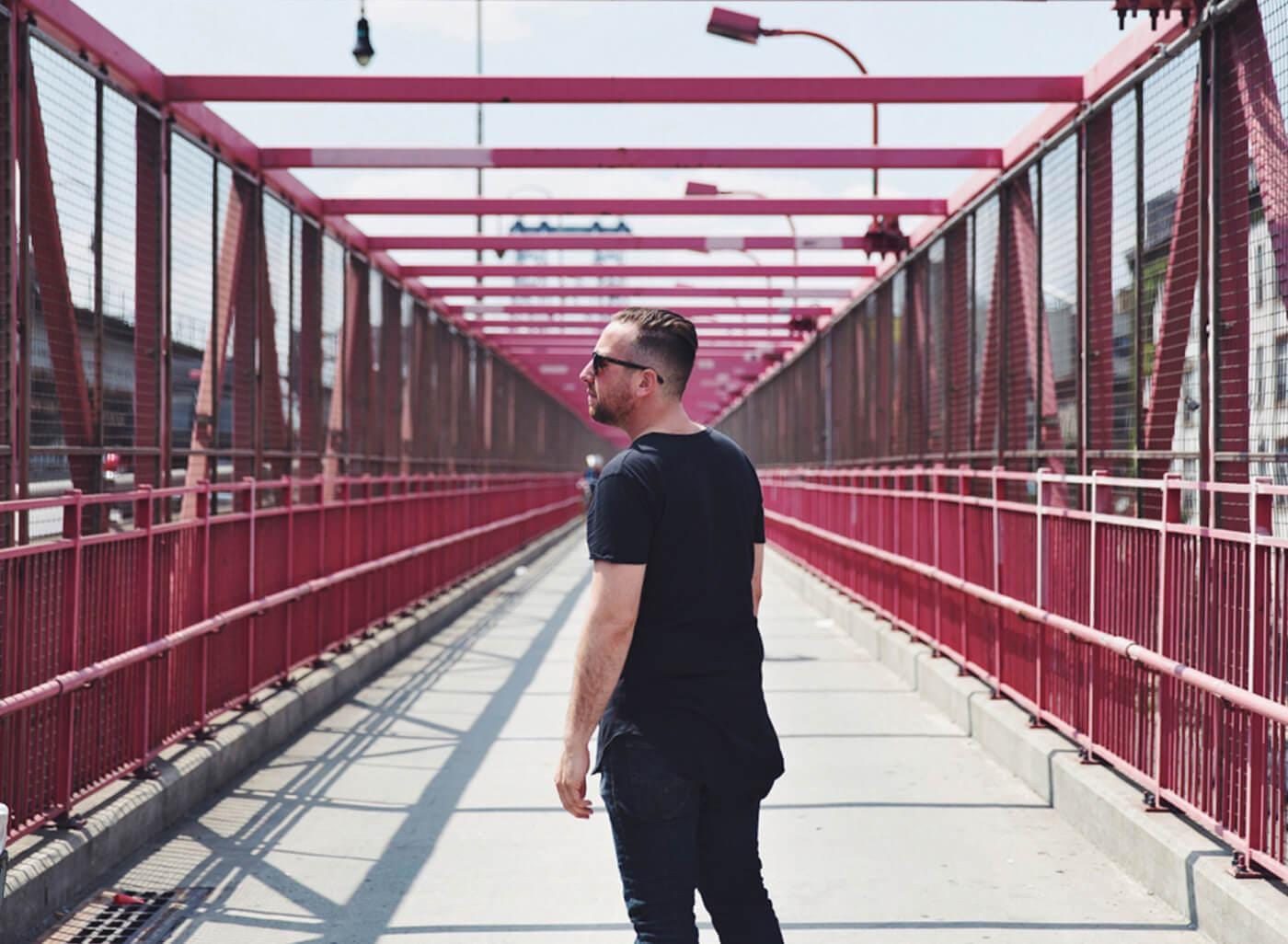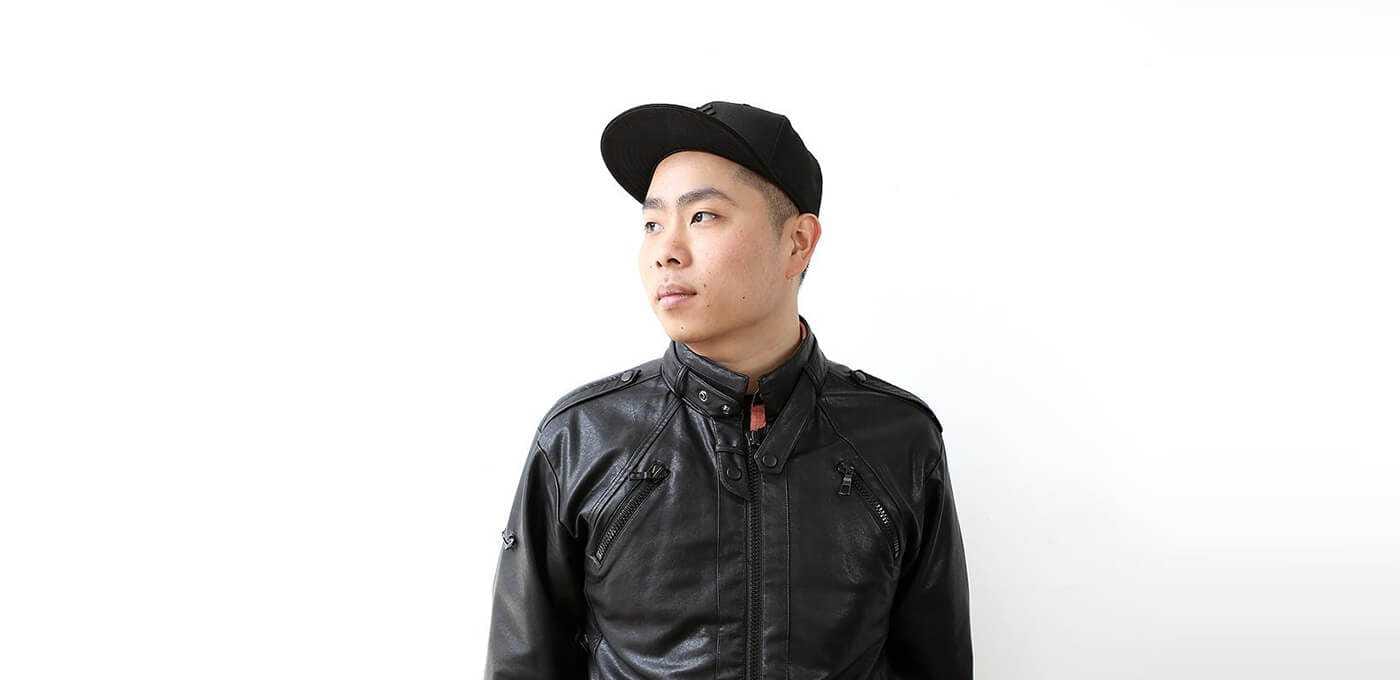Over the last 10 years, Alex Center has experienced firsthand how the sheer size of a corporation like Coke impacts the design process.
This is something he is able to contrast with his days at vitamin water before its acquisition by the beverage giant.
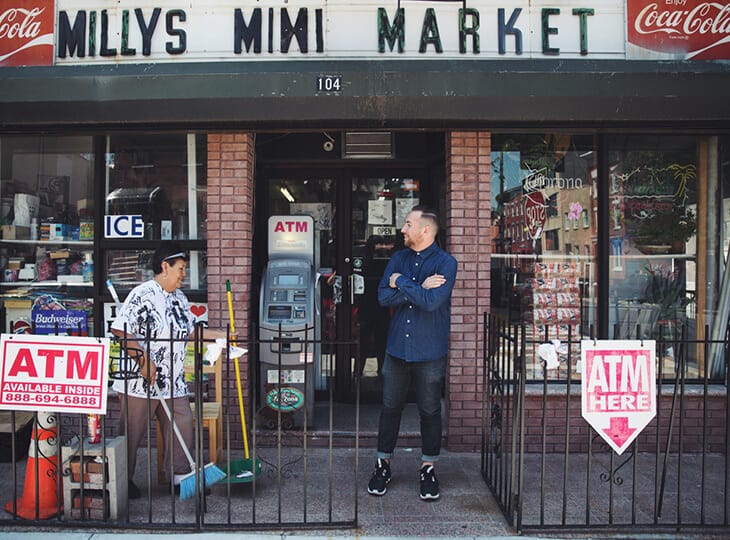
Giant corporations have a certain rep — they’re slow-moving beasts churning out mass-produced goods that ride closer to the center line than the cutting edge. The cool kids all want to work for the niche studios. But not Alex Center. The Coca-Cola creative and design director loves operating in a mass play market. “Transitioning from a small to big company has taught me everything I know about branding and selling products,” he says.
Talking to Center is like peeking through the walls of one of the largest corporations in the world. Over the last 10 years, he has experienced firsthand how the sheer size of a corporation like Coke affects the design process — something he is able to contrast with his days at vitaminwater before its acquisition by Coca-Cola.
A champion of in-house design teams, Center recently spoke with contributing editor Dave Benton about the way a designer can become a central part of a large brand’s journey over time in a way that is not possible for an agency, how Coca-Cola communicates the distinction between strategy, positioning, and visual design within its organization, and how his job changed when he went from working for vitaminwater to Coca-Cola.
Design is an inclusive term. How do you communicate the distinction between strategy, positioning, and visual design within Coca-Cola?
It all comes back to goals and intention: What kind of brands are we building? What do they stand for? And, ultimately, [how] do we want people to understand and feel about them? As a designer working for a company investing a ton of money in the formula of the product — the actual physical liquid that goes into the bottle that is going to reach millions of people— you’re talking about a lot of decisions, so you have to think about how design helps us achieve our goals and our mission.
As designers, you have to ask yourself what the principals and intention are, and whether the work you are showing achieves that. Companies want people to go post about them on Instagram and feel like their brand is representative of the consumer’s mindset. In order to design things to make people feel that way, designers need to put themselves in the end user’s head. Often non-designers within a company fail to think about what the customer is going to feel when they walk past the product: Does it make them feel understood? Do they want to be a part of the brand? Do they want to pick up the product and try it for the first time and give us their money?

These are the questions everyone should be asking. It’s commercial art. The goal is commerce, but it’s more than the product inside of the bottle. It’s the brand that we want people to fall in love with. It’s the ability to make someone feel that they have to buy a Levi’s denim jacket instead of another denim jacket that’s exactly the same. For me that’s one of the most fun things about it. All the drinks in the cooler are fairly similar at the end of the day. They all quench your thirst.
I’m very romantic about the moment of truth in the beverage category. That moment when you get to that cooler in the back of a deli, you are faced with a choice of at least 20 different brands. I’m fascinated with why you make the decision to go for this, rather than that. You package what your brand is, and you try to charm people through your packaging. The strategy, the positioning, the visual design, and craftsmanship are all equal. At Coke you can’t go in with one without the other. The stakes are too high and the investment is at the highest level.
I’ve stopped saying “good” and “bad.” It’s either successful or unsuccessful. Let’s face it, there is bad design that is successful. You can debate what good design and bad design is until you are blue in the face. But you can’t deny that LaCroix, for example, is effectivedesign. Or Sriracha. The brand of Sriracha is super strong right now, but I don’t think anyone would say the design is particularly beautiful. Branding is meaningful differentiation.
How did your job change when you went from working as part of a small design team for vitaminwater to working for Coke when they acquired the brand?
Everything changed while kind of staying the exact same. When we were smaller we had the advantages of being nimble and quick. When I started designing for vitaminwater, I would sit directly next to the brand director and the creative director would be just two seats down, so the approval process consisted of me simply showing it to the right and to the left. The decisions that were made were in the minds and bellies of the design and creative teams with marketing, and they were all sitting together. That made for some great products that got out to the world quickly.
When I compare that to the process of a publicly traded company like Coca-Cola — the time it takes to get things done, the amount of people involved in everything I work on, and the amount of testing and approvals, it can slow things down. Ultimately, only the best work gets through the funnel. When I was younger and working in a smaller environment, the funnel was super wide and we would throw things into the world that were really questionable. As a result there were some huge wins, but also some really arguable things we put out there. Transitioning from a small to big company has taught me everything I know about branding and selling products. In the past I would create a design because I felt it was right for the brand and right for the business. Now I have to show that it is and why it is, which has made me a stronger designer. What I am doing has to strategically align with our business goals and objectives. A big part of my job today is getting people within the company to understand that where I am headed is the right place to go.
How has staying at one brand so long affected the way you think of branding?
Having worked for a brand for so long, I know that “branding” is not a singular project. Being a brand is kind of like being a rapper. Not a lot of rappers are loved because of their name and their first album. People love rappers because they put together a body of work over a period of time that they continuously find themselves connecting with. When someone says they are doing a branding project they think they are doing a logo and a look, but the brand is a moving, flowing stream…a marathon…a rap career…it changes!
Every single thing you do, every album, every tour, every tweet, and every decision you make, amounts to people either loving you and wanting to be a part of your orbit or not. The best rappers are the ones that have been able to find new and exciting ways over time to make people care. This pursuit started before I got here and will continue after I’m gone. But during the time I’ve been here I’ve been a part of making things that make people care about these brands. To me, branding is a series of moments: They are our versions of albums and mixtapes.
A lot of designers want to work on niche brands and stay away from the big commercial ones. You don’t work that way. Why?
I like things that are mainstream, and I love operating on a global stage. The bigger and the more impactful, the more exciting. You ask any rapper if they want more people to listen to their music and the answer is “yes.” The way to do that where it feels great is to get the most amount of people to listen to your music and not compromise while getting there. I remember in my earlier days, I physically went to see a billboard I laid out and I thought it was the coolest thing ever. So many people were going to see it!
I want to do work that the majority of people can interact with. My favorite designs are the ones that have the biggest impact, whether that impact is positive or negative. Just making people aware is huge. I’ve been coming in every day for 10 years and working on one thing, and I feel like I’m just now coming into my own. I feel like I got my masters in branding and design at the best school in the world, the Coca-Cola marketing department.
How is design different working in a company as opposed to an agency and how does this affect the value you and your team provide?
I’ve never worked in an agency so I can’t speak to that experience. I know the client side really well and I’ve seen companies begin to bring design in-house because non-designers in companies are getting smarter and more adept at using design to accomplish and truly understand our business goals. Working in-house you get to be a part of the full picture. In an agency — no matter how close you are with your client — there is always that moment when the client walks out the door.
Agencies will always have influence and always be needed for an outside perspective, but in-house you are the person that drives that car. No matter how good an agency is, there’s always a sense of “inside-outside.” At the end of a day, we are not going to make a decision because our agency tells us to— it’s going to be because we think it’s the right thing to do for the brand and the business. Although it is ideally a real collaboration, ultimately the decisions come from inside.
How have you seen the world of design change in large corporations over your years at Coke?
When I went to school and studied design, being a graphic designer was cool but hardly anyone did it because less people had an understanding of what a designer did. In 2016, professional basketball teams filled stadiums full of season ticket holders just to unveil their new logos and uniforms. People really care about design now. Budweiser changes their logo on their packaging and it’s on late night TV. That sort of arena of “branding as a sport” is amazing. It’s also made the everyday person a bit more critical of what we do. But it has ultimately given us a more valuable spot. If you look at the big companies like Target, Nike, or Coca-Cola, they literally have 100+ people in-house designing and these people are laying out the future of these companies. Everyone in the design community always said they just wanted a seat at the table. Now the seat is ours. Designers now have positions at the highest level inside of our world’s biggest companies. This is the golden age of design. The flip side of that is that now everyone feels they have the platform to vote “yes” or “no” on something you create. Creativity can be very objective! In this arena there is not a lot of room for error, especially in 2017 where you see businesses who make small mistakes pay so severely.
Have you had a moment in your career where you feel like you “made it”?
I felt like I had 1,000 percent achieved my goal when I was working with rappers and athletes [at vitaminwater]. We were the hot brand back then and I had the dream job of all dream jobs – doing what I loved and getting to make stuff that people across the world would see. I became confident in myself because I was confident in my job and who I had become. I felt like there was nothing cooler and nothing better than what I was doing.
50 Cent was an ambassador for vitaminwater during your early days working with the brand. Have you got a good 50 Cent story to share?
The most memorable was my first big photoshoot with 50 Cent where I was the art director. We had spent weeks preparing for it. When he got to the set people had built me up as the genius behind the shoot and introduced me that way to 50 Cent. He sized me up and said, “So you think you’re pretty special, huh?” I won’t forget that moment…I’m a huge 50 Cent fan.
You’re a big Hip Hop fan. What is your favorite Hip Hop quote that relates to design?
I end all of my talks with the same quote from Lil Wayne. The quote is from his song Dr. Carter and the quote is “Gotta work everyday, Gotta not be cliché, Gotta stand out like Andre 3K.” It’s one of my favorite Wayne songs where he plays a doctor giving advice to other rappers in an attempt to save the rap industry from its “death.” I love that quote because it’s about putting in the work, trying to better yourself everyday, all while making sure that you’re standing out from the crowd. This is great advice for any designer and something I try to remind myself on the regular. There are a lot of similarities between being a great rapper and being a great designer.
